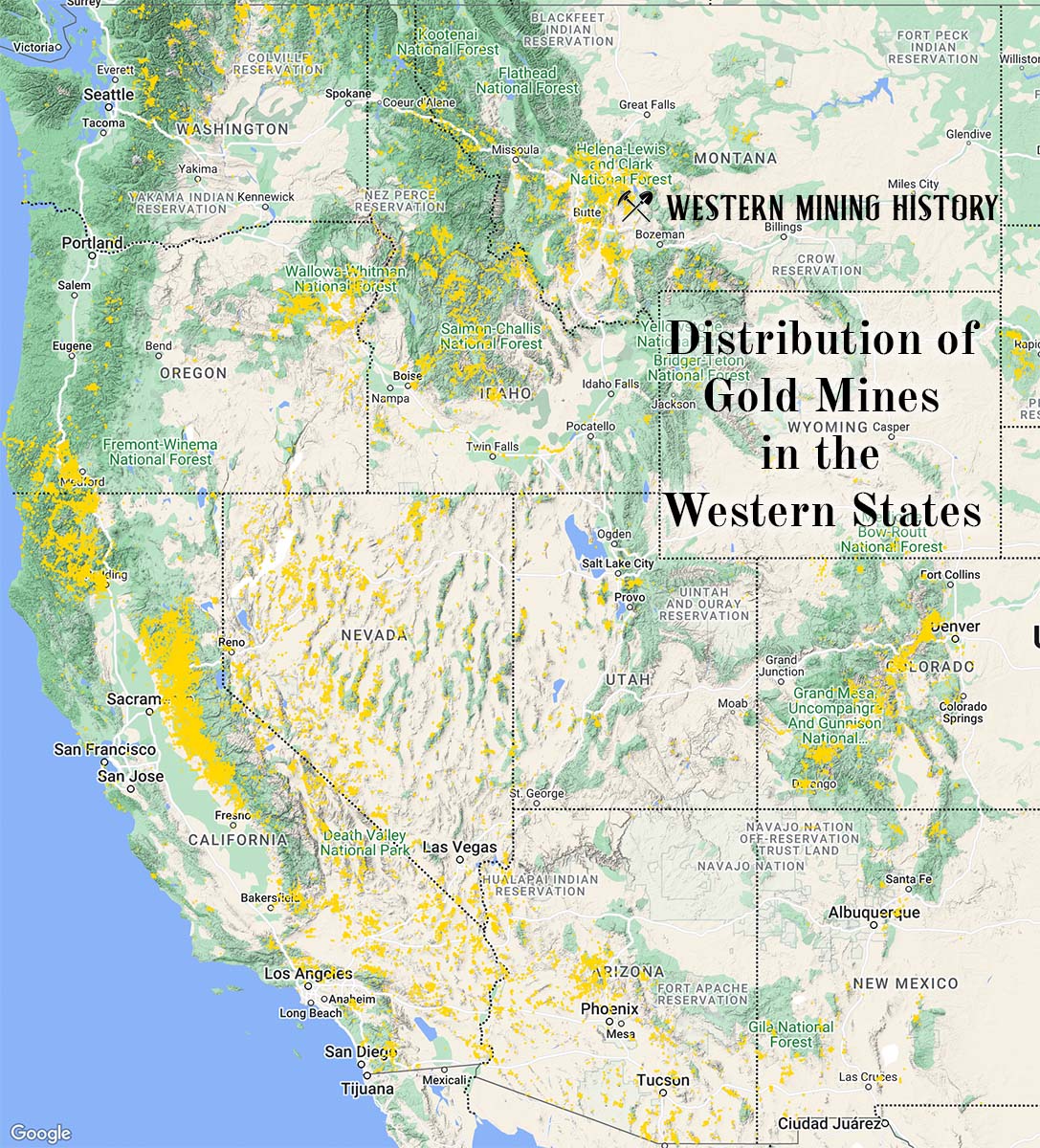The Iron King Number 2 Mine is a lead and silver mine located in Utah county, Utah at an elevation of 6,030 feet.
About the MRDS Data:
All mine locations were obtained from the USGS Mineral Resources Data System. The locations and other information in this database have not been verified for accuracy. It should be assumed that all mines are on private property.
Mine Info
Elevation: 6,030 Feet (1,838 Meters)
Commodity: Lead, Silver
Lat, Long: 39.94306, -112.06833
Map: View on Google Maps
Iron King Number 2 Mine MRDS details
Site Name
Primary: Iron King Number 2 Mine
Commodity
Primary: Lead
Primary: Silver
Secondary: Gold
Secondary: Copper
Secondary: Iron
Tertiary: Barium-Barite
Location
State: Utah
County: Utah
District: Tintic District (East Tintic)
Land Status
Land ownership: Private
Note: the land ownership field only identifies whether the area the mine is in is generally on public lands like Forest Service or BLM land, or if it is in an area that is generally private property. It does not definitively identify property status, nor does it indicate claim status or whether an area is open to prospecting. Always respect private property.
Holdings
Not available
Workings
Type: Underground
Ownership
Owner Name: Amax Copper Mines, Subsidiary Of Amax, Inc.
Home Office: Greenwich, Conn.
Owner Name: Eureka Lilly Mining Co.
Home Office: Salt Lake City, Ut.
Production
Year: 1931
Time Period: 1923-1931
Material type: ORE
Description: Cp_Grade: ^0.1 Oz Au, 1.4 Oz Ag, 0.1% Cu
Deposit
Record Type: Site
Operation Category: Past Producer
Operation Type: Unknown
Year First Production: 1924
Year Last Production: 1931
Discovery Year: 1923
Discovery Method: Ore-Mineral In Place
Years of Production:
Organization:
Significant: N
Deposit Size: S
Physiography
General Physiographic Area: Intermontane Plateaus
Physiographic Province: Basin And Range Province
Physiographic Section: Great Basin
Physiographic Detail: Thomas Mountains - Tintic Mountains
Mineral Deposit Model
Not available
Orebody
Not available
Structure
Type: L
Description: Fault Zone
Alterations
Alteration Type: L
Alteration Text: Argillization
Rocks
Name: Volcanic Rock (Aphanitic)
Role: Associated
Age Type: Associated Rock
Age Young: Oligocene
Name: Volcanic Rock (Aphanitic)
Role: Associated
Age Type: Host Rock
Age Young: Late Cambrian
Analytical Data
Not available
Materials
Ore: Galena
Ore: Enargite
Ore: Pyrite
Gangue: Barite
Gangue: Quartz
Comments
Comment (Location): HILLS EAST OF EUREKA TOWNSITE, IN GULCH ; INFO FROM LAND.ST :1977
Comment (Deposit): WATER SANDS JUST BELOW 1450 LEVEL ; INFO.SRC : 1 PUB LIT
Comment (Deposit): NORTH OF SHAFT
Comment (Workings): ADITS DRIVEN PRIOR TO 1918. WORKING, FROM SHAFT FOLLOW EUREKA LILLY FAULT
Comment (Geology): ORE RELATES TO INTRUSIONS AND EUREKA LILLY FAULT N55A ARE MONZONITE DIKES
References
Reference (Deposit): SALT LAKE MINING REVIEW, NOVEMBER 15, 1923 TO OCTOBER 30, 1925.
Reference (Production): COOK, 1957
Reference (Deposit): COOK, D.R., ED., 1957, GEOLOGY OF THE EAST TINTIC MOUNTAINS AND ORE DEPOSITS OF THE TINTIC MINING DISTRICTS: UTAH GEOL. SOC. GUIDEBOOK, NO. 12, 183 P.
Reference (Deposit): MORRIS, H.T., 1964, GEOLOGY OF THE EUREKA QUADRANGLE , UTAH AND JUAB COUNTIES, UTAH: U.S. GEOLOGICAL SURVEY BULLETIN 1142-K, P. K1-K29.
Reference (Deposit): LINDGREN, WALDEMAR, AND LOUGHLIN, G.F., 1919, GEOLOGY AND ORE DEPOSITS OF THE TINTIC MINING DISTRICT, UTAH: U.S. GEOLOGICAL SURVEY PROFESSIONAL PAPER 1078 276 PP.
Reference (Deposit): MORRIS, H.T., AND LOVERING, T.S., 1979, GENERAL GEOLOGY AND MINES OF THE EAST TINTIC MINING DISTRICT, UTAH AND JUAB COUNTIES, UTAH: U.S. GEOLOGICAL SURVEY PROFESSIONAL PAPER 1024, 194 PP.
The Top Ten Gold Producing States

These ten states contributed the most to the gold production that built the West from 1848 through the 1930s. The Top Ten Gold Producing States.